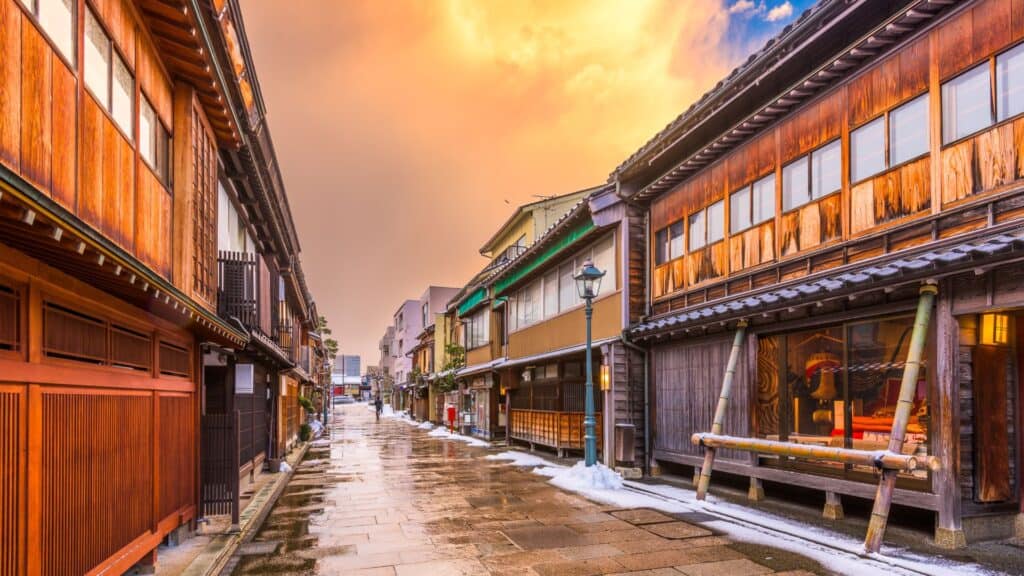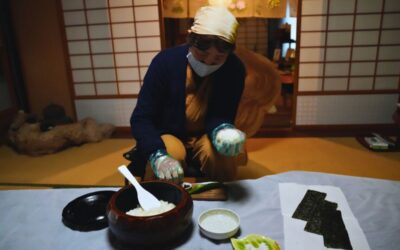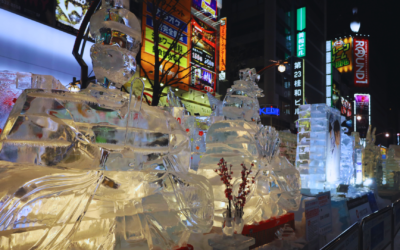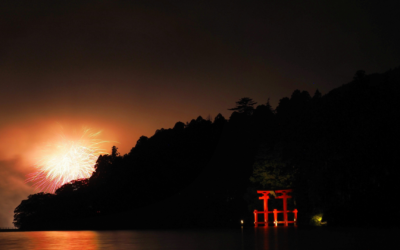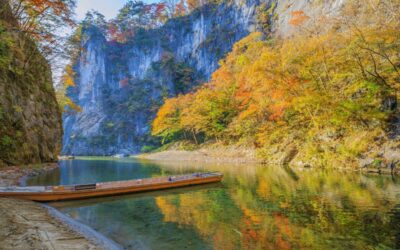Kanazawa is the capital city of Ishikawa Prefecture, located on the western coast of Japan. As one of Japan’s largest cities, it is a popular destination for sightseeing and dining, boasting an elegant cityscape and fresh seafood from the Hokuriku region.
The main sights are concentrated in a few areas around the city, easily accessible by bus or on foot without the need for a car. Here is an overnight itinerary for Kanazawa, ideal for a two-day, one-night visit, starting from Kanazawa Station and covering the sights you can’t miss on your first trip to the area.
Overnight Itinerary for Kanazawa: Day 1
Arrive at Kanazawa Station
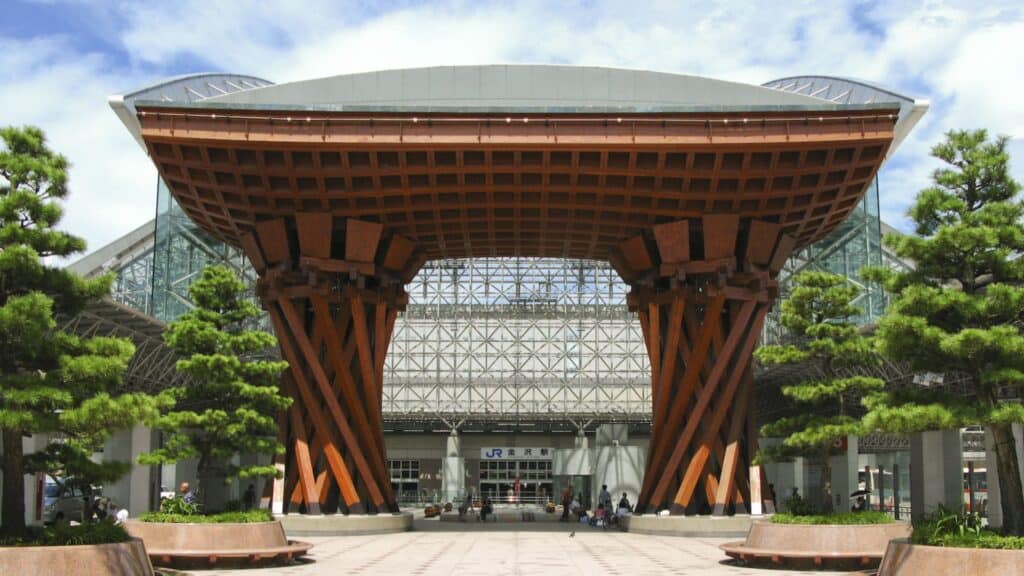
Kanazawa Station, a landmark of Kanazawa, sparked much controversy in 2011 when it was ranked sixth among the 14 most beautiful train stations in the world by the American travel magazine, Travel & Leisure. Originally built in 1898 and renovated in 2005 by architect Ryuzo Shirae, the station now boasts a futuristic look with a glass and steel dome and a giant wooden gate resembling a torii gate at the east exit plaza.
The Motenashi Dome and Tsuzumi-mon gate are the first photo stops for many visitors to Kanazawa. Enjoy the architecture and capture some memorable photos with one of the symbols of Kanazawa!
11:00 am – Omicho Market
Omicho Market, known as the ‘Citizens’ Kitchen’, has been supporting Kanazawa’s food culture for 300 years since the Edo period. Located just nine minutes by bus or a 15-minute walk from Kanazawa Station, the narrow lanes are lined with some 180 shops offering a wide variety of fresh seafood, locally grown vegetables, and fruit.
The market is bustling with tourists shopping and eating. If you’re considering lunch, try Kanazawa’s popular gourmet Kaisen-don, where fresh seafood from the Sea of Japan is served so generously that it overflows the bowl. Note that popular restaurants often have long queues, especially on weekends. To avoid the rush, consider having an early lunch at Omicho Market, then continue your sightseeing.
Optional – Kimono Rental

Kimono rental has become popular among female tourists in Kanazawa. The city, with its many elegant townscapes, is considered particularly suited to wearing kimonos. Many tourists can be seen exploring famous sights like the Higashi Chaya-gai district in kimonos.
Several kimono rental shops are conveniently located near Kanazawa Station and Omicho Market, with prices starting at around 5,000 yen per day. It’s a wonderful way to enhance your experience in Kanazawa!
12:30 pm – Higashi-Chaya District
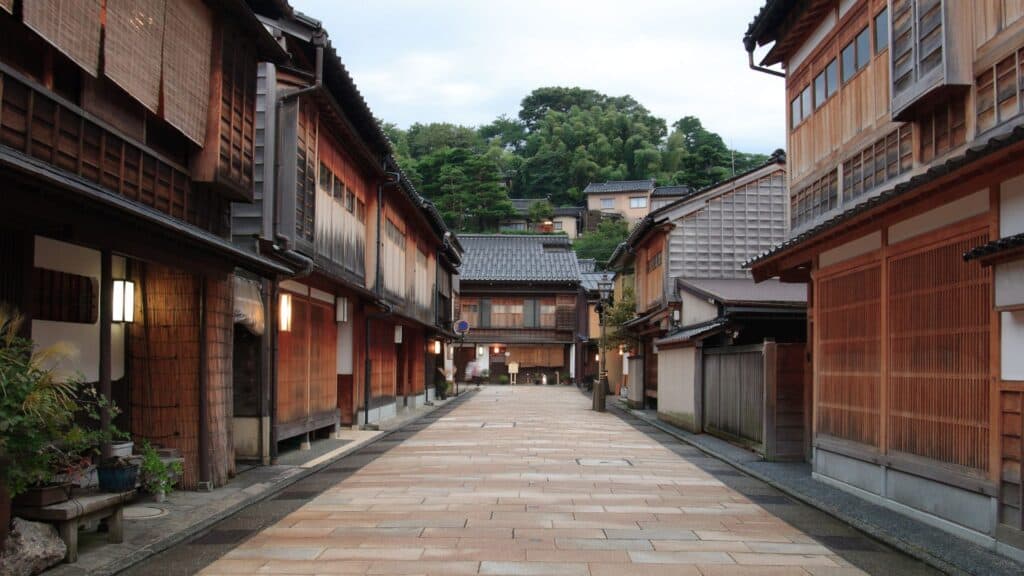
Higashi Chaya-gai, one of Kanazawa’s most popular tourist destinations, is a historic teahouse district established by the Kaga clan in the Edo period (1603-1868). The preserved historical buildings and streets, now home to cafés and galleries revitalising townhouses, and select shops selling traditional handicrafts, maintain the atmosphere of an old teahouse district.
Just eight minutes by bus or a 10-minute walk from Omicho Market, the area offers many photogenic scenes, particularly of people dressed in kimonos against the traditional streetscape. Take your time exploring this captivating district!
2:00 pm – National Important Cultural Property, Ochaya Shima
Located in the Higashi-Chaya district, Shima is a prestigious teahouse built in 1820 and has remained untouched since the Edo period. It is designated as a National Important Cultural Property of Japan and is open to the public for a fee of around 500 yen. The inside of the building is as elegant and delicate as seen on TV period dramas and offers a glimpse of the chic adult social scene of the Edo period.
Shima also has a tea room, Kanson-an, where you can enjoy matcha tea and Traditional Japanese sweets while gazing out over the garden. Why not spend a quiet moment in the ancient capital of Kanazawa?
Address: 1 Chome-13-21 Higashiyama, Kanazawa, Ishikawa 920-0831
Gold Leaf Ice Cream

When the Japanese think of gold leaf, Kanazawa immediately comes to mind. Thriving as a centre of gold leaf production since the 1600s, Kanazawa today produces nearly 100% of Japan’s gold leaf. The city’s unique entsuke technique for creating gold leaf, which has existed for over 400 years, was certified by Japan in 2014 as a Selected Conservation Technique and added to UNESCO’s list of Intangible Cultural Heritage in December 2020.
How can you enjoy gold leaf from Kanazawa? Visit the Higashi Chaya District, where Hakuichi, a famous shop, offers a variety of gold leaf products, including the exquisite kinpaku no kagayaki soft-serve ice cream. This treat is not only visually stunning but also deliciously refreshing. Don’t miss capturing this beautiful moment!
Kazuemachi-Chaya District
The Kazuemachi Chaya-gai is a quaint area along the Asano River, nestled between Asanogawa Ohashi Bridge and Naka-no Hashi Bridge. Lined with traditional-style restaurants and teahouses, this district offers a calmer atmosphere compared to the bustling Higashi Chaya-gai. Just a five-minute walk from Higashi Chaya-gai, it’s the perfect place to escape the crowds and explore more of what Kanazawa has to offer as part of your overnight itinerary.
Kenrokuen Garden
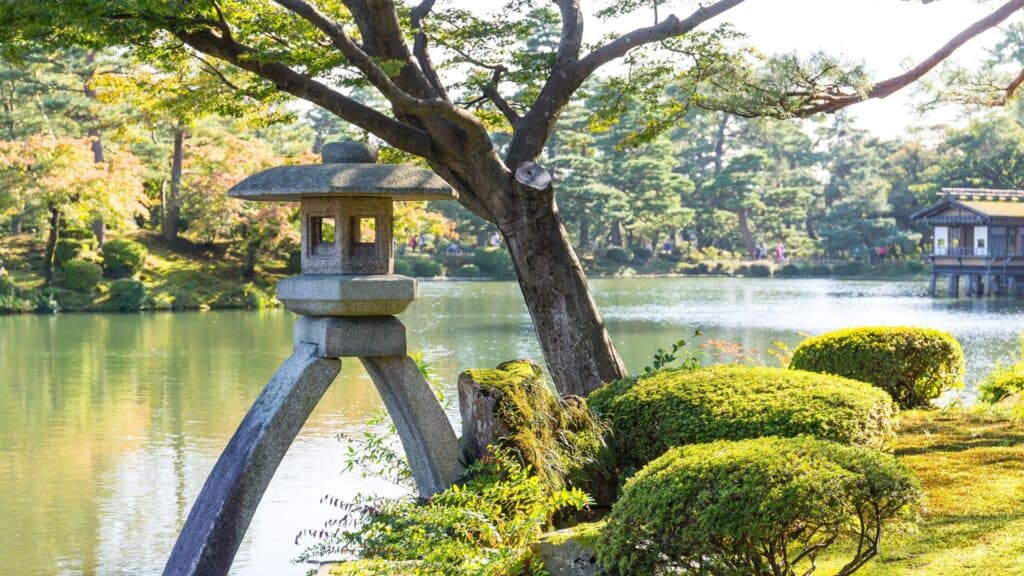
Kenrokuen Garden is a vast garden dotted with mountains, ponds, and teahouses where visitors can walk around and enjoy the different landscapes. Along with Korakuen Garden in Okayama City, Okayama Prefecture, and Kairakuen Garden in Mito City, Ibaraki Prefecture, Kenrokuen Garden is one of the three most famous gardens in Japan. The Michelin Green Guide Japan has awarded it the highest rating of three stars.
This garden is also home to other historical and iconic structures. At the northern bank of the Kasumigaike Pond is the Kotojitoro Lantern, which stands over 2 meters tall, made uniquely with two legs instead of one. Below Kasumigaike Pond lies one of Japan’s oldest fountains, powered by a drop in elevation in the pond, causing the water to shoot up 3.5 meters high!
The garden’s beauty can be enjoyed throughout the four seasons: in spring, 200 red and white plum trees and 420 cherry trees of 20 varieties bloom; in summer, more flowers bloom and greenery is abundant; in autumn, the park is filled with bright red autumn leaves; in winter, the “Yuki-hanging”, a traditional winter custom in Kanazawa, protects the branches of the trees from the snow. Stroll through this garden for only around 320 yen and enjoy the scenes, shops, and picturesque beauty it offers.
Kanazawa Castle Park

Adjacent to Kenrokuen Garden is Kanazawa Castle Park, the historic seat of the Maeda family. Accessible via the Katsurazaka Exit from Kenrokuen, the park is undergoing continual restoration to revive its historical structures. Highlights include the Hishi and Tsuzuki Yagura turrets, connected by the Gojiken Nagaya storehouse, and the newly restored Hashizume-mon Tsuzuki Yagura gate, which has a modest admission fee.
You can also visit the Kahoku-mon and Nezumita-mon Gates, restored in recent years and free to enter, offering exhibitions on their history and architecture. The park’s Gyokuseninmaru Garden, restored in 2015, features a central pond and scenic walking paths. Enjoy the park’s serene ambiance and its night illumination on weekends and holidays.
Hotel Stay
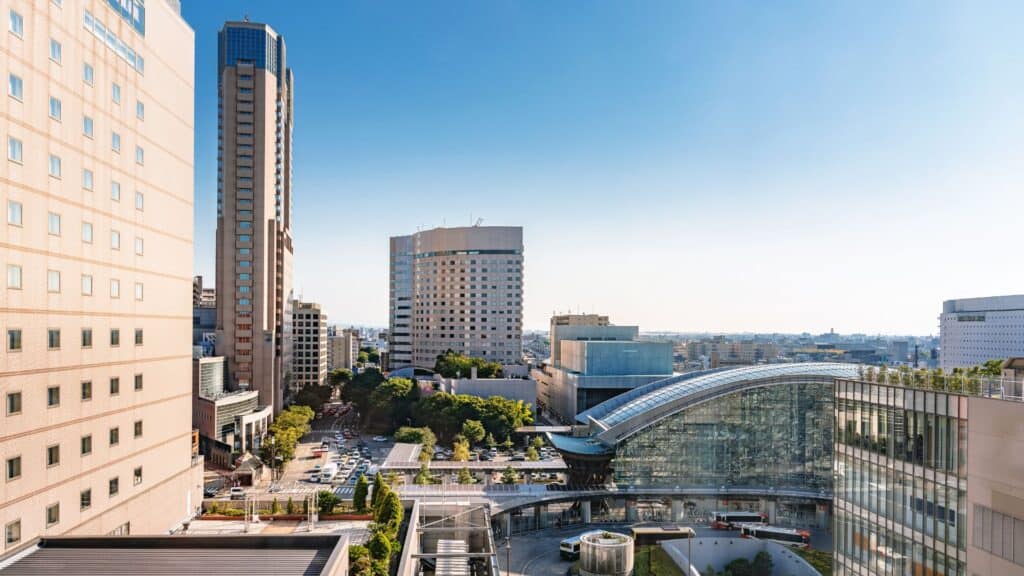
After a full day of sightseeing, consider staying at one of the many hotels concentrated around Kanazawa Station and Kanazawa Castle Park. Whether you prefer business hotels or luxury accommodations, the areas around Korinbo, Katamachi, and Tatemachi offer a range of options. These districts are known as Hokuriku’s most bustling gourmet hubs, ensuring that you are never far from both comfort and culinary delights.
Overnight Itinerary for Kanazawa: Day 2
10:00 am – Nagamachi Samurai District
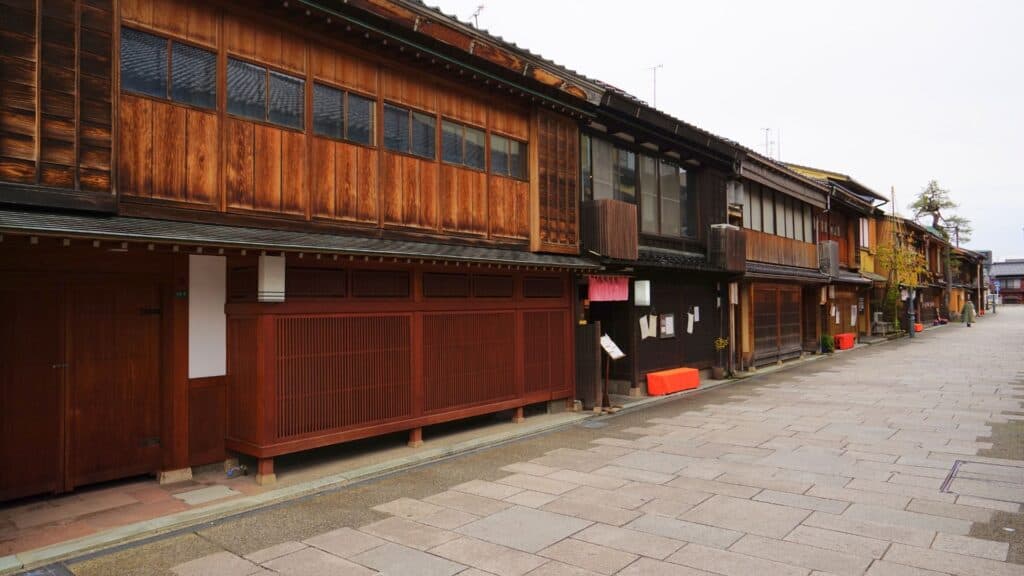
Step back into the feudal era at the Nagamachi Samurai District, where the traditional earthen walls and stone-paved streets evoke the ambiance of the samurai’s era. The main highlight is the Nomura-ke, a beautifully restored samurai residence displaying artifacts from a prosperous samurai era. Just a 2-minute walk from here, the Kaga Hanshi stable offers a serene garden setting.
As you explore, take the opportunity to visit the various museums and craft shops, and don’t miss trying the local confectionary or picking up some exquisite Kutani ware.
12:00 pm – Nishi-Chaya District
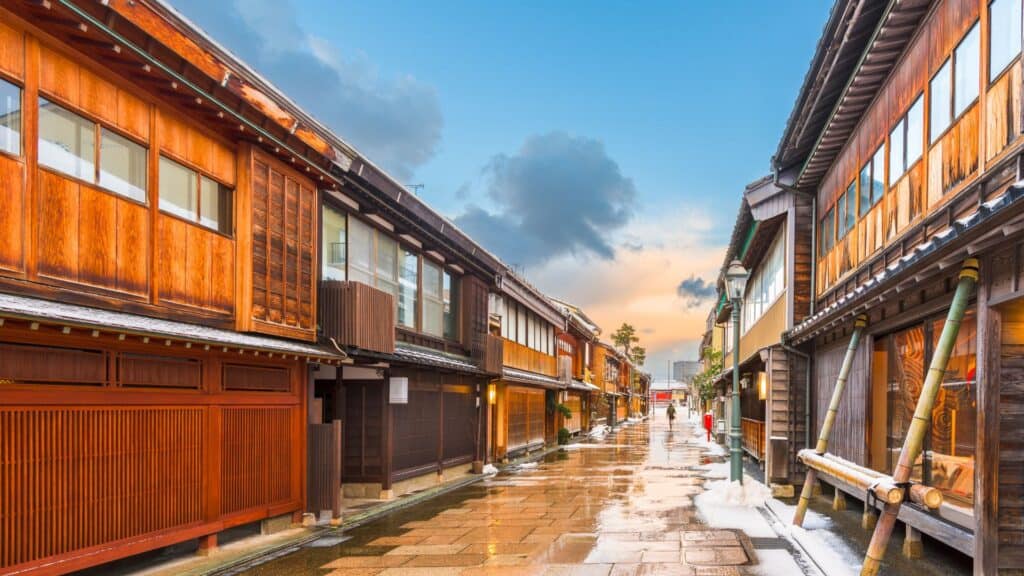
Less bustling than its counterpart Higashi Chaya-gai, the Nishi Chaya District offers a quieter, yet equally charming atmosphere. Home to many Kappo restaurants and Machiya shops, this district showcases a quaint vibe and is known to have the largest number of geiko in Kanazawa. The sounds of shamisen fill the air in the evening, enhancing the traditional Japanese experience.
2:00pm – Myoriyu-ji Temple
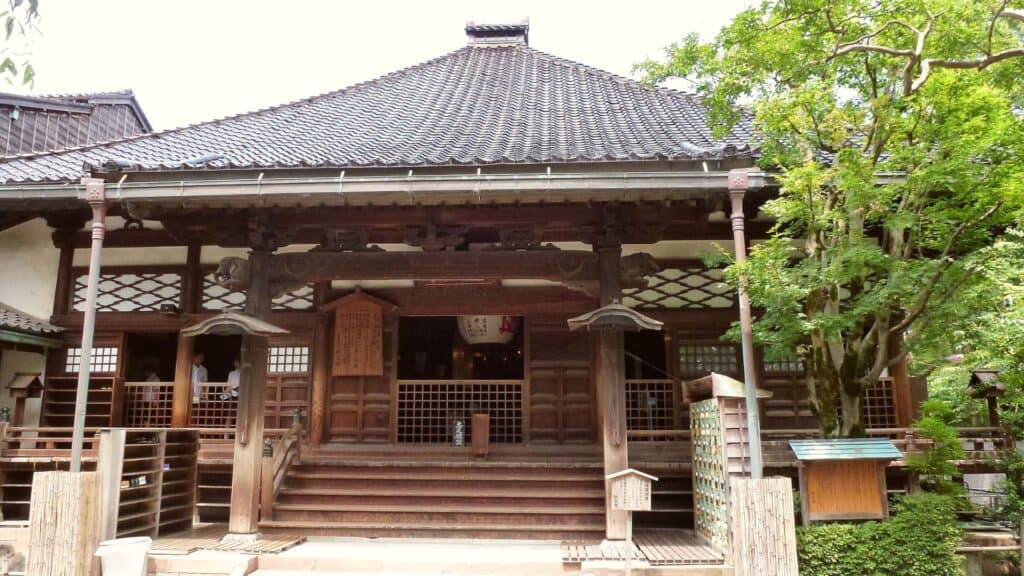
Credit: Irina Gelbukh
Concluding your overnight itinerary for Kanazawa is a visit to Myoryu-ji Temple, famously nicknamed the Ninja Temple for its deceptive defenses and hidden features designed to outwit intruders during tense periods under Tokugawa rule. Despite its name, the temple’s architecture is ingeniously crafted with hidden rooms, secret passages, and a labyrinthine layout. Guided tours, available with advance booking, offer an intriguing glimpse into this architectural marvel.
Wrapping Up Your Kanazawa Adventure
Two days and one night in Kanazawa provide just a glimpse into the rich cultural tapestry and historical depth of this vibrant city. Whether you’re visiting for business or leisure, this itinerary ensures you experience the best of Kanazawa.
Have you visited Kanazawa before? How was your experience? If you have other recommendations or hidden gems not covered in this itinerary, let us know! Connect with us through Instagram, YouTube, TikTok, or Facebook.
I hope this provides a comprehensive continuation and conclusion to your overnight itinerary for Kanazawa! If you need further modifications or additional sections, feel free to ask.

